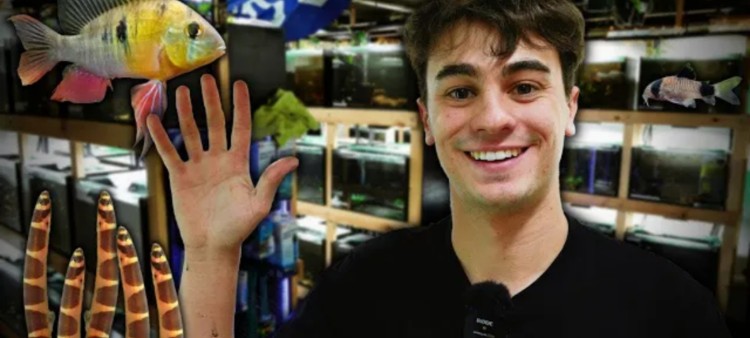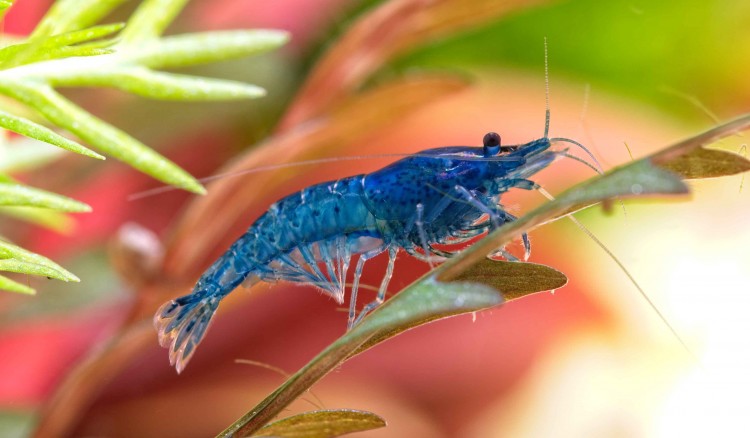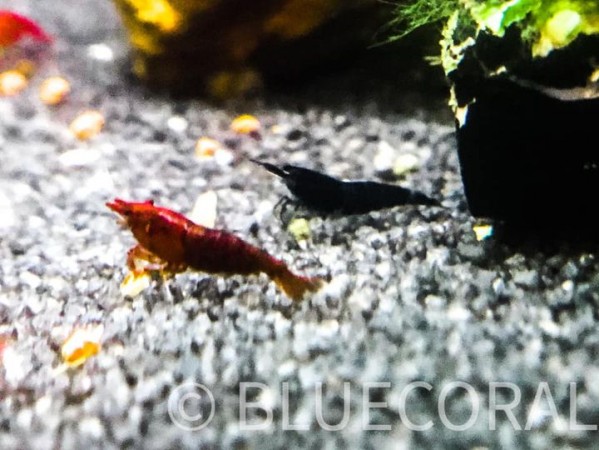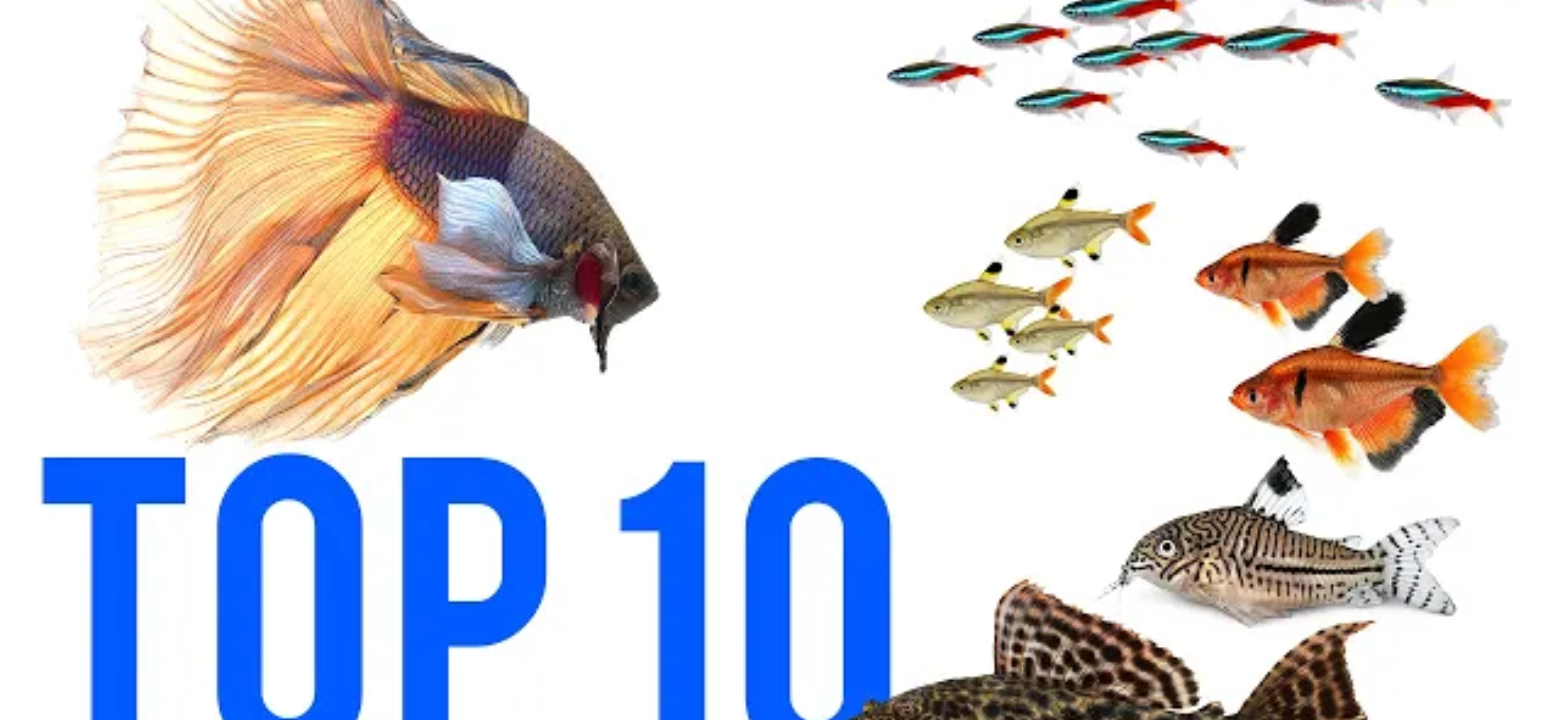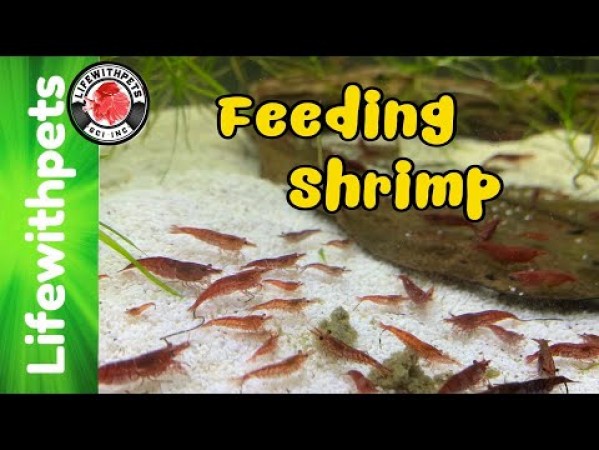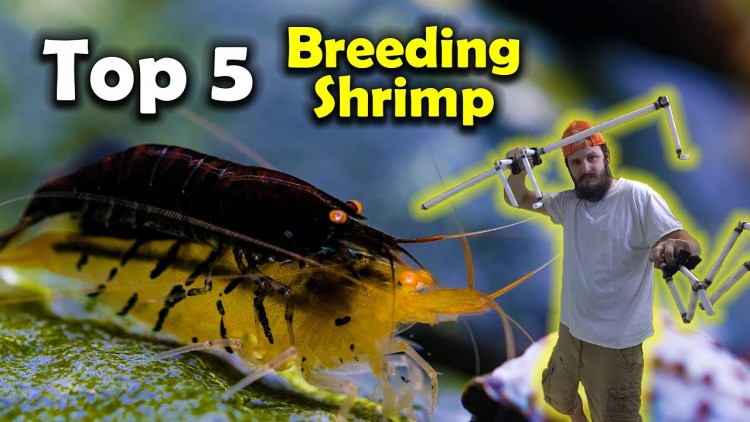- Name:
Red Crystal Shrimp
(View AKA's) - Family: Atyidae
- Species: Shrimp
- Scientific Name: Caridina sp
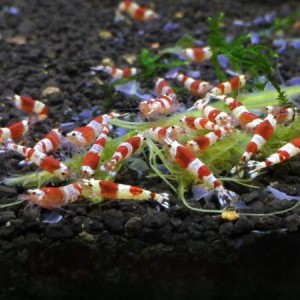

General info about Red Crystal Shrimp
The Crystal Red Shrimps are not the typical ones that may be found in the wild but are in fact a result of hybrid breeding over the years. They are a modified version of the bee shrimps of Hong Kong and China. Shrimps of this category are known by various other names like Crystal Shrimp, Crystal Black Shrimp, Crystal Red Shrimp, and Bee Shrimp. The beautiful and popular Red Crystal Bee Shrimp is a cultivated red form of the bee shrimp. They have been selectively bred by Japan’s Mr. Hisayasu Suzuki. They are very popular among shrimp lovers. Right from their birth, they look identical to the adult shrimps. Being very sensitive, they require ample attention and care while growing up. So, they are not a good choice as a beginner shrimp due to their initial cost and constant demand.
The red colored shrimps live for about 1 to 2 years approximately. They are highly social creatures that are best maintained in large colonies. They are suitable for mature aquariums containing communities of small, peaceful fish only, as larger tankmates will regard them as a snack. Shrimp are naturally prey animals and naturally spend most of their time foraging. They will appreciate some plants and other decorations to hide in and eat algae and aufwuchs off.
A large aquarium is not needed to keep Crystal Red shrimp: a setup as small as 5 gallons (19L) can be enough to sustain a reasonably sized colony. Keep in mind, though, that these shrimp are quite sensitive and larger tanks are easier to keep stable than smaller ones. Beginners especially might want to go for something around 10 gallons (38L) to make things a little easier. Like most species of shrimp, an elevated nitrate level will not be tolerated - ensure high standards of water quality are maintained at all times, ideally with small partial water changes performed a few times per week. The aquarium water should be changed at least 30% each week to reduce nitrates and replenish minerals. Dechlorinate any water added to the aquarium. Crystal Red Shrimp are sensitive to water changes and hence, more frequent lower volume changes are far safer and more effective than large infrequent water changes.
Like all aquariums, a Crystal Red shrimp tank needs to be filtered. For smaller tanks, a sponge filter might be a good option, as it gently filters the water and can't accidentally suck up any baby shrimp. To keep an eye on your water values and cycle you're also going to need a liquid water test kit. A heater is recommended; although these shrimp do well at room temperature, a thermostat heater can prevent any sudden fluctuations in temperature and help keep things as stable as possible.
Red Crystal Bee Shrimps will molt regularly whilst growing, and the sudden appearance of perfectly formed shrimp casings on the floor of the aquarium can cause alarm to fishkeepers who have not seen this before. The shrimps can sometimes be seen feeding on the casings - this is actually very nutritious for them, so do not rush to siphon them from the substrate. Once the shrimp has molted, it will remain hidden for a time until the new shell hardens and it has a bit more protection. Be aware that these shrimp do not tend to fare well in water that is over 79 F, and for greatest long-term health, hard, alkaline conditions brine shrimp.
64-77 F is the recommended temperature for this shrimp. The pH for Crystal Red shrimp should be slightly acidic from 6.2 – 7.2. This range will maximize health, color and egg hatching rates. The general hardness should be around ~6-8. TDS should be at about 200ppm. There are many commercial products that will help to buffer the aquarium water to these levels. When using a buffer remember to use it with incoming water during water changes. CRS prefer slightly harder water, this is a definite requirement for breeding CRS.
Crystal Red shrimp have been selectively bred into many different color patterns. Depending on color distribution and intensity a shrimp can fall into different grades, which influences price and 'quality'. Generally speaking, a Crystal Red shrimp with more white and more opaque coloration falls into a higher grade. The grades in order from least to most desirable are C, B, A, S, S+, SS, SSS. There are also a few different ‘types’ within the separate grades. Grades of Crystal Red shrimp are only dependent on thickness and solidity of color banding. The health, size, activeness and lifespan of the shrimp is identical between all grades.
Red Crystal Shrimp Diet & Nutrition
Red Crystal Bee Shrimp are excellent algae eaters and will browse on many different algae types. Red Crystal Bee Shrimp diet includes algae wafers, sinking pellets, crushed flake foods, small frozen foods such as daphnia, baby brine shrimp, mini-bloodworm etc., and also offer some vegetable matter such as blanched spinach or courgette. Because of their tiny size, they should only be offered small portions of vegetables, with any uneaten leftovers being removed within 24 hours. If the vegetables aren’t removed, they will foul the water. Some good vegetables to offer them are lightly blanched zucchini medallions, cucumber, shelled peas, broccoli, and romaine lettuce (avoid iceberg lettuce as it has very few nutrients).
Highly recommended for planted aquaria, they will not damage the plants instead, they will feed on any dead leaves - and large groups will also be beneficial in keeping the leaves of slower-growing species free from nuisance algae. Tall plants seem to be particularly favored, and these shrimp can often be seen climbing and 'hanging around' in plant cover near to the water's surface. It can be beneficial to add some dried Indian almond leaves (Terminalia catappa) to the aquarium as biofilm will form on these as they slowly rot, and this provides a great source of food for the shrimps, whilst helping to maintain a low pH in the aquarium.
Diet of young shrimps is identical to the adult shrimps. Crystal Red shrimp will constantly molt and leave their old shells. Do not remove the shells from the aquarium as these will provide much-needed calcium in their diet when the shrimp colony consumes it.
Determining Sex of Red Crystal Shrimp
The best way to differentiate between the males and the females is to look at the size of the shrimp; The females are larger than the males with a deeper abdomen and wider tail.
Breeding & Spawning Red Crystal Shrimp
Red Crystal Bee Shrimps often breed freely in the home aquarium given optimal conditions. If both males and females are present, hatchlings will usually appear without any intervention from the aquarist. Once the female is ready to mate, she will release pheromones into the water. The male will then be seen swimming around the aquarium frantically, seeking the female. After mating has occurred, the female will carry the eggs under her abdomen. She will use her pleopods to circulate water over the eggs. The eggs will usually hatch after 30 days, though the water temperature will influence the length of incubation. Ideally, the shrimp should be raised in water at the cooler end of their preferred temperature range. Not only will the hatchlings grow larger in cooler water, but will also have better survival rates, although their growth rate will be slowed. Colors also tend to be more vibrant at lower temperatures. Best results occur when the water is slightly soft and acidic.
Because red crystal shrimp hatch as fully formed shrimp and don’t have a larval stage as much other shrimp do, hatchling mortality is usually quite low. The young do not go through a larval stage and, are instead, born as miniature replicas of the adult shrimp. Unless they are bred in an aquarium containing fish, in which case, many hatchlings will be lost to predation. Remove any fish as the babies are an easy snack. At this stage, it is best to use an air driven filter because the tiny baby shrimp cannot be sucked up. Within about 4-5 weeks they should reach adulthood and be able to breed themselves.
On hatching, the offspring will be colored red and white just like their parents, however, actual grading cannot be performed until they develop further with age, when the quality of features will be easier to determine.
Red Crystal Shrimp Origin
Red Crystal Shrimps are not found in any specific location as they are the hybrid varieties of the black and white bee shrimps. While red crystal shrimp aren’t found in the wild, their ancestors were native to the Guangdong and Guangxi provinces of China, Hong Kong, and some reports indicate they are also found in Vietnam. Bee shrimp are primarily found in small mountain streams.
Caution with Red Crystal Shrimp
Many aquarists are tempted to mix Red Crystal Bee Shrimps with Cherry Shrimps in the same aquarium, but this, as their temperature requirements are rather different. Although you will always hear of cases where Crystal Red Bee Shrimps have been kept in water with a higher pH or temperature, lifespan, overall health and breeding will favor under such conditions. Be extremely careful if using CO2 injection on planted aquaria containing these shrimps, as they will not cope with swings in pH.
Crystal Red Shrimps are highly susceptible to even very low levels of nitrite and ammonia in the aquarium. Nitrite and ammonia should always be at 0 post cycling. Nitrates should be as close to 0ppm as possible. Any reading under 20ppm is suitable for keeping CRS, elevated levels can be reduced by adding aquatic plants and removing decaying matter.
Fertilizer additives need to be carefully checked before adding them to a Crystal Red shrimp aquarium. All copper and heavy metal additives should be avoided.
Acclimating Red Crystal Shrimp
Acclimatize these shrimps very carefully and slowly, either by drip acclimation or using a Maidenhead Aquatics Fintro. Red Crystal Shrimps are considered somewhat delicate and so they are not recommended for beginners.
Original Detail
| Name | Species | Family | Scientific Name | More Detail | Added by |
|---|---|---|---|---|---|
| Red Crystal Shrimp | Shrimp | Atyidae | Caridina sp | The Crystal Red Shrimps are not the typical ones that may be found in the wild but are in fact a result of hybrid breeding over the years. They are a modified version of the bee shrimps of Hong Kong and China. Shrimps of this category are known by various other names like Crystal Shrimp, Crystal Black Shrimp, Crystal Red Shrimp, and Bee Shrimp. The beautiful and popular Red Crystal Bee Shrimp is a cultivated red form of the bee shrimp. They have been selectively bred by Japan’s Mr. Hisayasu Suzuki. They are very popular among shrimp lovers. Right from their birth, they look identical to the adult shrimps. Being very sensitive, they require ample attention and care while growing up. So, they are not a good choice as a beginner shrimp due to their initial cost and constant demand. The red colored shrimps live for about 1 to 2 years approximately. They are highly social creatures that are best maintained in large colonies. They are suitable for mature aquariums containing communities of small, peaceful fish only, as larger tankmates will regard them as a snack. Shrimp are naturally prey animals and naturally spend most of their time foraging. They will appreciate some plants and other decorations to hide in and eat algae and aufwuchs off. A large aquarium is not needed to keep Crystal Red shrimp: a setup as small as 5 gallons (19L) can be enough to sustain a reasonably sized colony. Keep in mind, though, that these shrimp are quite sensitive and larger tanks are easier to keep stable than smaller ones. Beginners especially might want to go for something around 10 gallons (38L) to make things a little easier. Like most species of shrimp, an elevated nitrate level will not be tolerated - ensure high standards of water quality are maintained at all times, ideally with small partial water changes performed a few times per week. The aquarium water should be changed at least 30% each week to reduce nitrates and replenish minerals. Dechlorinate any water added to the aquarium. Crystal Red Shrimp are sensitive to water changes and hence, more frequent lower volume changes are far safer and more effective than large infrequent water changes. Like all aquariums, a Crystal Red shrimp tank needs to be filtered. For smaller tanks, a sponge filter might be a good option, as it gently filters the water and can't accidentally suck up any baby shrimp. To keep an eye on your water values and cycle you're also going to need a liquid water test kit. A heater is recommended; although these shrimp do well at room temperature, a thermostat heater can prevent any sudden fluctuations in temperature and help keep things as stable as possible. Red Crystal Bee Shrimps will molt regularly whilst growing, and the sudden appearance of perfectly formed shrimp casings on the floor of the aquarium can cause alarm to fishkeepers who have not seen this before. The shrimps can sometimes be seen feeding on the casings - this is actually very nutritious for them, so do not rush to siphon them from the substrate. Once the shrimp has molted, it will remain hidden for a time until the new shell hardens and it has a bit more protection. Be aware that these shrimp do not tend to fare well in water that is over 79 F, and for greatest long-term health, hard, alkaline conditions brine shrimp. 64-77 F is the recommended temperature for this shrimp. The pH for Crystal Red shrimp should be slightly acidic from 6.2 – 7.2. This range will maximize health, color and egg hatching rates. The general hardness should be around ~6-8. TDS should be at about 200ppm. There are many commercial products that will help to buffer the aquarium water to these levels. When using a buffer remember to use it with incoming water during water changes. CRS prefer slightly harder water, this is a definite requirement for breeding CRS. Crystal Red shrimp have been selectively bred into many different color patterns. Depending on color distribution and intensity a shrimp can fall into different grades, which influences price and 'quality'. Generally speaking, a Crystal Red shrimp with more white and more opaque coloration falls into a higher grade. The grades in order from least to most desirable are C, B, A, S, S+, SS, SSS. There are also a few different ‘types’ within the separate grades. Grades of Crystal Red shrimp are only dependent on thickness and solidity of color banding. The health, size, activeness and lifespan of the shrimp is identical between all grades.
|
PalaciosAn |
Changed by users
| Submitted Date | Submitted By | Status | Action |
|---|


